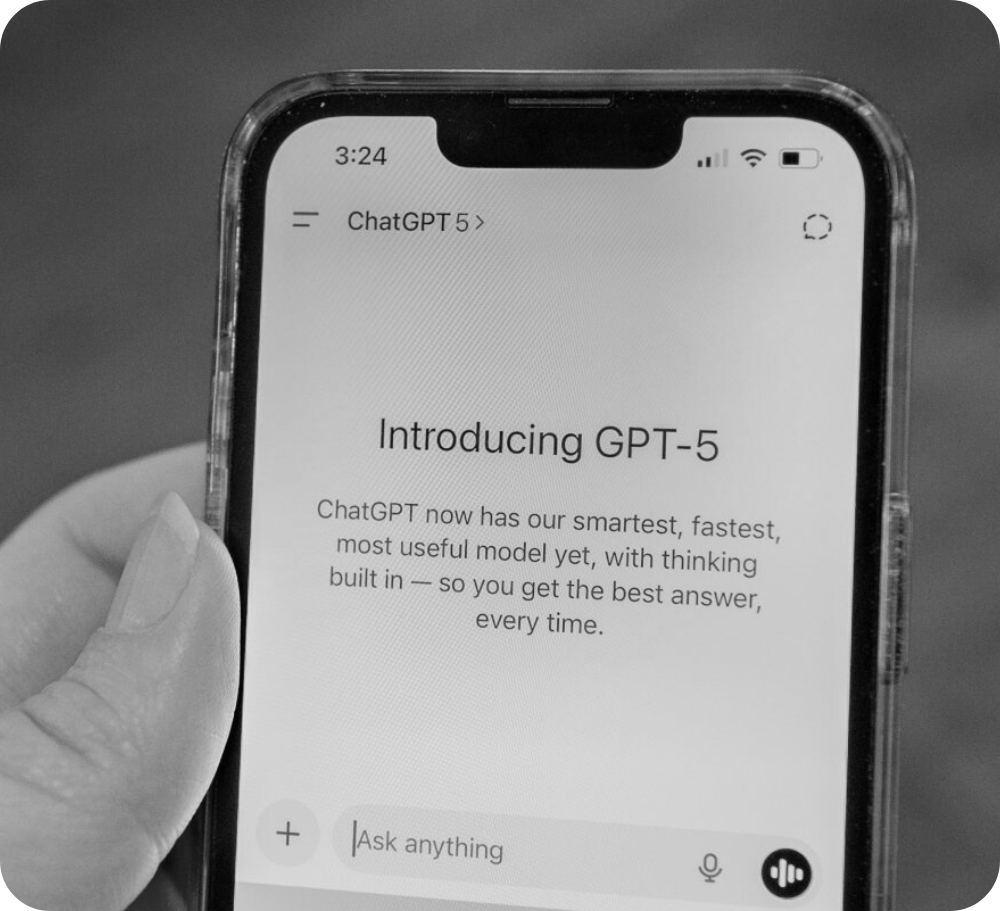ChatGPT-5: Need To Know for Enterprise & Power Users
new ChatGPT-5 interface
I tuned into the ChatGPT-5 launch event last week, and was slightly overwhelmed by the west coast enthusiasm for the new product, but one week on, has the reality lived up to the hype?
Five million business users now run on OpenAI. GPT-5 arrives as the promised “subject-matter expert in every pocket.” It must also halt a brutal slide: OpenAI enterprise share has halved from 50 % to 25 % in eighteen months. Does this release change that story?
What actually changed?
One ChatGPT-5 model, one endpoint. The old pick-and-mix menu is gone; an auto-router decides whether you get speed or deep reasoning.
Context window jumps from 128 k (GPT-4o) to 1 M tokens. Whole brand books or 100-page RFPs now fit in a single prompt.
Prices fall on the surface. $1.25 / M input tokens vs GPT-4’s $2.00, but deep-thinking output still costs $10 / M—and complex tasks burn 2-3× more of them.
Tone shifts. Fewer hallucinations, crisper answers, less warmth by default.
So what?
You gain coherence and accuracy, at the price of higher latency (15–60 s when the router digs in) and a steeper bill on reasoning-heavy work.
Early signals from the field - power users are not happy
“Feels like hiring a brilliant but slow consultant - worth it when depth wins.” RevOps lead
“Stalls for a minute, then answers in two lines; great for audits, not for brainstorms.” Enterprise dev manager
Strengths
Unified tools - code, browse, vision - always on.
Benchmark leader in maths, code and multimodal tasks.
Input tokens 40 % cheaper than GPT-4.
Frictions
Creativity and warmth feel trimmed.
Router sometimes “over-thinks” easy asks.
Deep reasoning drives token costs up fast.
Moves for Marketing & Sales Leaders
Switch on legacy GPT-4 if you miss the old flair
Settings → Model preferences → Show legacy models
Retest your three highest-value prompts
Add “short, no deep reasoning” for speed.
Add “think step-by-step” for strategy.
Add “rewrite in our brand voice” when tone matters.
Keep a multi-LLM stack. Wire Claude or Gemini into your orchestration layer and benchmark every month.
Guard the budget. Route routine copy to cheaper models; reserve GPT-5 for situations where long memory or rigorous logic moves revenue.
GPT-5 tidies the interface, stretches memory and sharpens logic, all great from a product management perspective for mass market ‘daily driver’ models.
BUT It is not a silver bullet and power users have lost nuance and need to review / adapt mission critical prompts to regain same level of nuance and control.

